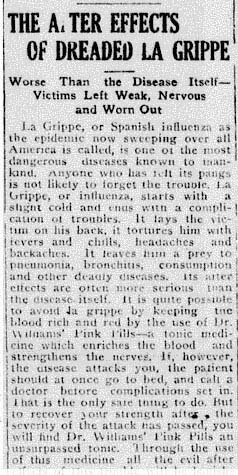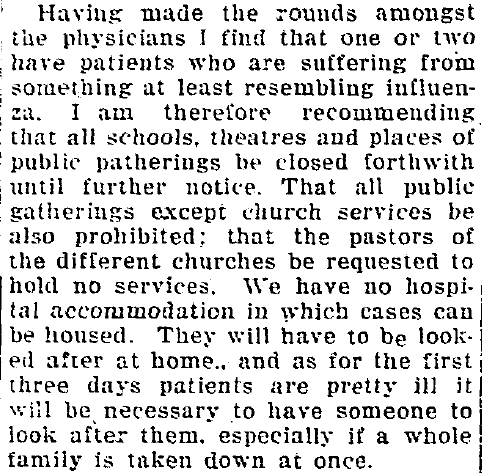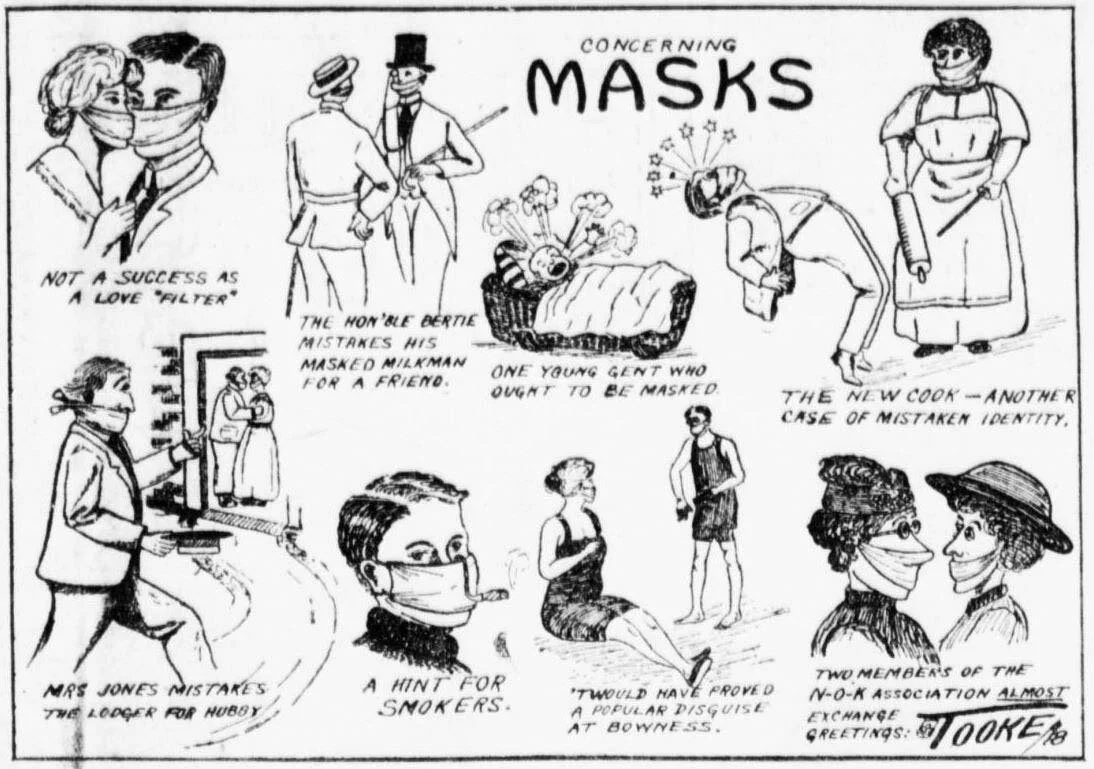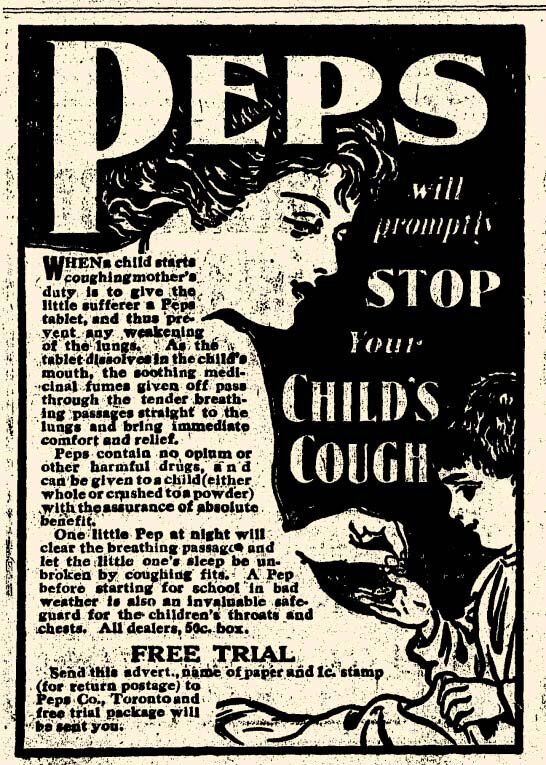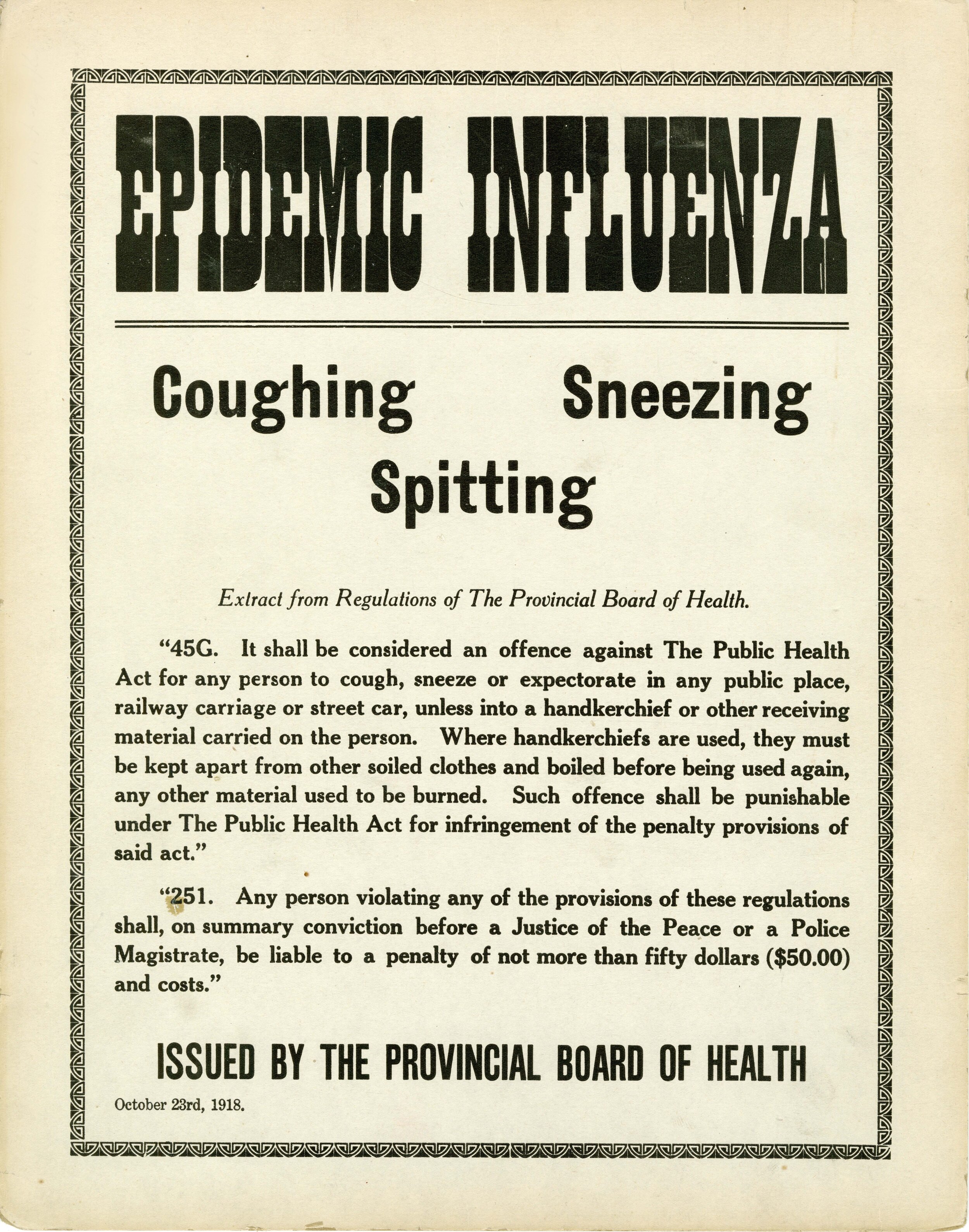Introduction panel from the exhibit, originally on display at the Galt Museum & Archives from June 2–October 14, 2018.
curated by Ashley Henrickson
Introduction
Clipping from Lethbridge Herald, November 26, 1918.
In November 1918, a group of worried neighbours entered the Rombough family home near Taber, to find Mr. Rombough lying dead in his bed. His wife and four children were beside him, all seriously ill with influenza.
Tragic scenes like this played out in homes around the world, because between 40 and 100 million people were killed by the 1918–1919 flu pandemic, including 4,000 Albertans. This exhibit sheds light on the experiences of families like the Romboughs, and considers how this global pandemic played out at home.
Why was this flu different?
Proportion of 1918 Flu Infections and Deaths
Albertans fight a seasonal flu each year, but in 1918 the flu was especially deadly. That strain, commonly referred to as the Spanish flu, was unique because it disproportionally killed young, healthy adults (aged 15–45). Scientists are still unsure why.
This specific flu attacked its victims quickly. First, they suffered from symptoms we commonly associate with the flu, including nausea, fever, aches and diarrhea. Unlucky patients then developed dark spots on their cheeks and a bluish tint in their faces, as they contracted pneumonia—a disease that caused their lungs to fill with fluid, often leading to death by suffocation.
“It lays the victim on his back, it tortures him with fevers and chills, headaches and backaches.”
Official Response
Men wearing masks during the influenza pandemic in Alberta, 1918
Library and Archives Canada, PA-025025
The influenza virus landed in Toronto in the first or second week of September, 1918. By October 10, the virus had travelled to southern Alberta, and on October 17, Fort Macleod, Pincher Creek, Taber and Lethbridge were quarantined. No one could leave or enter these areas. The quarantines caused immense chaos; people visiting the city for the day were unable to return home. The quarantine was lifted after just 48 hours, but the city continually closed and reopened churches, theaters and schools as the flu ebbed and waned. Public gatherings, in general, were banned during especially deadly weeks and the province ordered all Albertans to wear masks whenever they left their homes during October and November, 1918. City officials and Lethbridge citizens also responded by converting Wesley Hall and the Miner’s Library into emergency flu hospitals. Many citizens openly defied official health regulations, refusing to wear masks or respect quarantine laws. However, the federal and provincial governments continued to play a large role in fighting the disease and the Federal Health Department was created in 1919 as a direct result of the pandemic.
Nursing the Flu
Nurses taking a short break outside the emergency flu hospital in Milo, Alberta, 1918
Glenbow Archives, NA-1367-38
Nurses were active participants in the fight against the flu. Many of these women worked very long hours, such as the five associated with the Lethbridge Nursing Mission, who visited as many as 40 patients in their homes a day and worked from 8 am to 10 pm.
Doctors and researchers knew little about the flu, and no medicine provided effective therapy. Good nursing, including food, water, rest, cleanliness and warmth provided patients with their best defence.
Family Doctors
Dr. Gibson, Ida Gibson and their children Alexander, Donald and Marjorie, outside their home in Munson, Alberta, ca. 1908
Courtesy of Grant Gibson
Doctors worked endlessly to aid flu victims, but with no effective remedies, they had little power to help the patients they met. The inability to cure patients caused great stress for many doctors and their families at home. “So many deaths!” recalled Marjorie, the daughter of Munson, Alberta’s local doctor, Dr. Gibson. During the flu epidemic, eleven-year-old Marjorie lived in this house with her family. She recalled that the phone rang endlessly with “despairing calls for help,” and many terrified families came directly to their door begging for aid. Her father travelled for weeks at a time, visiting sick families in their homes. Marjorie’s fifteen-year old brother drove their father from house to house, to allow Dr. Gibson to sleep in the back seat without stopping. Dr. Gibson, Murray, Marjorie and her other brothers all caught the deadly disease but recovered. Marjorie remembered the long years her family spent battling the flu as a “nightmare time in my memory.”
Volunteer Nurses: The Ripleys
“There are homes where the entire family is laid up, and no nurses available. It is to meet cases of that character that volunteer nurses are urgently required.”
Major Alvin Ripley and Elizabeth Ripley and their children Anna, Robert and Ruth (Alva), ca. 1915
Galt Museum & Archives, 19861052000
Many local women answered the call for volunteer nurses, and entered emergency hospitals or the homes of ill-stricken families, to care for the sick. Elisabeth Ripley of Lethbridge saw her brother-in-law’s family through the disease. Tragically, while performing this service, she contracted, and then died from, the flu.
Elisabeth’s death orphaned her three young children, whose father, Alvin Ripley, had been killed in the First World War a year earlier. This family’s tragic story demonstrates how closely the war and flu were tied, and the lasting impacts both had on young children.
After their parents’ death, the three Ripley children, Anna (8), Robert (5) and Ruth (3), were placed under the care of their uncle, Blair Ripley. In 1921, Anna (then age 11) was listed as head of household at a residence on 1240 5A Avenue South. The only adult listed in the census record was their maid, Elsie Filmer; their uncle had moved to Ontario.
The Ripley Orphans Grow Up
Current newspaper searches provide little information about Anna’s adult life, but Ruth and Robert both followed in their parents’ footsteps. Like her mother, Ruth provided health care to others. She attended the University of Alberta and became a registered dietitian, before serving as Director of Dietetics at the Health Sciences Centre in Winnipeg. She married and had one daughter. Like his father, Robert entered the military. During the Second World War, he served as director of air operations at air force headquarters. He was awarded the Order of the British Empire in 1946. In 1957, Robert was killed, along with seven other passengers, in a plane crash.
The Child’s Experience
Fusae Hironaka (right) was one of the many young children killed by the flu pandemic. She is pictured here with her baby brother, Ikey, shortly before her death in 1918.
Galt Museum & Archives, 19790275038
Children spent most of the flu pandemic inside their homes because schools in Lethbridge and the surrounding area were closed to prevent the spread of the disease. Many children spent these dark days fighting the flu themselves or aiding their ailing relatives. Most people fought the disease in their own homes, not in hospitals, so the children confined to these private spaces undoubtedly saw the disease first hand.
Indigenous Communities
Clipping from Lethbridge Herald, Feb 26, 1919
Indigenous people living on reserves in Alberta and across the country, suffered from horrifically higher mortality rates than other Canadians. In 1919, the Department of Indian Affairs reported that 3,694 Indigenous people living on reserves in Canada died from the flu, making the influenza mortality rate 34.85 per 1,000 cases: five times the national rate for non-Indigenous populations. The disease’s deadly effects were exaggerated by malnutrition and poor housing conditions on reserves, as well as widespread cases of tuberculosis and other diseases.
Home Remedies
Medicine bottles ca. 1910–1920.
One bottle donated to the exhibit by Jack Stokes, other three Galt Museum & Archives, P19880017003, P19880017007, P19880017009
With no vaccine or cure for influenza, families were forced to watch as community members and loved ones succumbed to the disease. Each day the Lethbridge Herald reported more and more cases of the flu: “481 new cases reported yesterday [in Alberta]”; “a total of perhaps 75 new cases this week [in Lethbridge]”; “16 new cases reported [in Magrath]”.
During this terrifying time, families searched furiously for remedies that would save their loved ones. These newspaper clippings show just a small number of the “cures” that were advertised to families in Lethbridge. They range from drinking watered-down wine to building a new house or injecting the blood of healthy people into the sick.










